Introduction

The Kawasaki Ninja 300 has been around for five years and we have continued to like the little super-sport. We now have here the Ninja 300 addressing two of the most famous quibbles against it – ABS and the price.
Kawasaki finally got around to building the Ninja in the Pune factory with increased localisation, which meant they saved a lot on import duties bringing the sticker price of the motorcycle down. So much so that the motorcycle which used to cost almost Rs 4.5 lakhs on road in Mumbai has come down to Rs 3.7 lakhs inclusive of the ABS unit. Now, this puts an entirely new perspective to the way we see the Ninja 300 and we also keep an eye out on the build, because Make in India can turn out to be a double-edged sword.

Quality

However, Make in India seems to have worked quite well for Kawasaki. The quality of paint, the plastic of the panels, the fit and finish are all good which means we have no complaints. The fairing panels might feel just a little lighter but that doesn’t change anything. Mechanicals seem just as sturdy as before and we could not find any niggles. This is a brand new motorcycle, less than 1000kms run. So, If there are any niggles lurking underneath, we will have to wait for it to put a lot more mileage before they come out.

Comfort

Supersport motorcycles and comfort aren’t really made for each other. But not on the Ninja 300. The riding posture is aggressive but just not enough to be hurting your wrists and back. The large seat allows you to move around a lot. You can go all the way back when crouching on the long straight, with your elbows tucked in or you can go all the way forward to brace the meaty tank when you grab on to the brake hard. Finding anchor around corners is intuitive.

The suspension setup is rather plush, a little towards the softer side. It soaks up almost all of the road undulations, little cracks and sneaky potholes. What it cannot soak is largely muffled into a thud rather than a crack. But the Ninja doesn’t bounce around and that gives a confidence-inspiring comfortable supple ride.

It doesn’t heat up much even in heavy traffic and a couple of kilometres of open road is all it needs to cool down. The twin-cylinder motor is torquey and allows you to potter around at low revs without having to shift all the time and that, along with the light clutch, makes it a breeze.
Performance

The twin-pot 296cc mill that powers the Ninja 300 churns out 38.5bhp of power at 11000rpm and 27 Nm of torque at 10000rpm. It might not have the best numbers to boast in its segment, but it certainly can compete for the most refined motor. It comfortably potters around 3500-4000rpm in sixth gear and if you are lazing to downshift, it will slowly spool up after you open the throttle.

The twin-cylinder putter transforms into a muted scream as you go past 7000rpm and when you hit the power band, it becomes vocal, almost sounding like a big four-cylinder. A mild buzz is felt on the handlebars and the foot-pegs as it nears the red-line but that is not really a grouse. The rate of acceleration also matches the note and the motorcycle feels lively from 10000rpm and reacts to every little throttle input. It races to 60kmph from standstill in 3.21 seconds on its way to the 100kmph mark in 6.84 seconds. It has a top whack of over 160kmph and accelerates from 30 to 60kmph in third gear in 3.32 seconds, 40-80kmph in fourth in 5.23 seconds and 80-100kmph in fifth in 3.23 seconds.

Shifts on the six-speed gearbox feel positive even when you don’t bother to pull the clutch for upshifts. And the slipper clutch comes handy when one is looking to cut down speed fast by downshifting and dumping the clutch while holding on to the brakes, not allowing the rear to bob around unnecessarily.

Coming to the brakes, the front doesn’t bite hard but is quite progressive and does provide feedback. The 290mm disc in the front cuts down speed quick enough and with ABS now handy, one can grab the lever without thinking twice.

Supersport purists might not like the way the front dives on the brake, but since it is predictable, it possible to get to working around it. The suspension does rock back and forth on and off the throttle, but that allows riders to play with the motorcycle better around a corner. The lack of outright stiffness allows the Ninja to soak mid-corner bumps well inspiring confidence, especially on unknown surfaces.

The steering is quick and the Ninja changes directions like the famed Japanese warrior. The slightly wider handlebars allow the rider to weigh as well as hang on to them while leaning into corners. The front goes a little light on full gas, just like all superbikes!
Technology

The 2018 Ninja 300 had the slipper clutch and the addition of ABS really completes the Ninja 300 as a product. The digital-analog instrument cluster reads well both during the day and the night and a gear-indicator would certainly have been welcome. Also, the Ninja 300 now runs MRFs, Zapper FY in the front and the Zapper S in the back. The tyres grip well and are confidence inspiring on the part-broken Indian roads. And yes, the Eco light is certainly heartening with the petrol prices hitting the roof.
Fuel Efficency

The Kawasaki Ninja 300 ABS returned a fuel economy of 29.87kmpl and with a 17-litre tank, you can easily look at a range of 450kms if you are primarily cruising. And that is quite a bit of range for a supersport!
Fitness of Purpose

The Ninja 300 is a pure-bred supersport and takes on corners like it is a piece of cake. It has got the right amount of ammunition as well as the precision to blast through all kinds of challenges the road might have in store. Also, the icing on the cake is the comfort that it offers along with the supple ride and apt ergonomics which make it one of the best packages in the entry-level supersport segment.

Our Take

As we have said before, with the new price tag, the Ninja 300 has become a very lucrative option. While it is still more expensive than the KTM RC 390, it is much more refined, much more comfortable and also sounds better thanks to the two cylinders. It is heavier and not as fast, but is much more liveable. Well, so is the new Yamaha R3 and the Benelli 302 R, but the Ninja slays them with its new price tag.
The new livery has the Ninja splashed on to the fairings makes it look like a big bike. This, in addition to the attractive price tag, build and agility, probably makes it the best entry-level supersport!

Gallery
1/39
Kawasaki Ninja 300 Action
Double Tap to Zoom











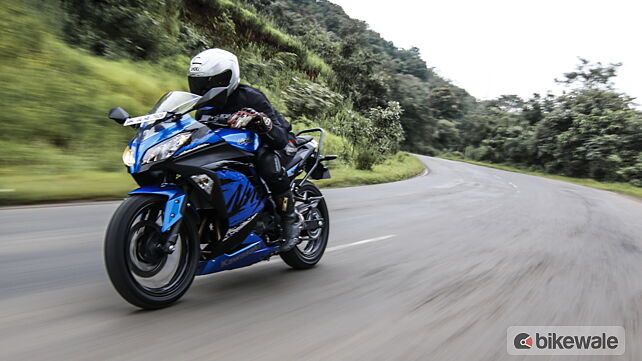












![Kawasaki Ninja 300 [2018-2019] Image Kawasaki Ninja 300 [2018-2019] Image](https://imgd.aeplcdn.com/272x153/bw/models/kawasaki-ninja300.jpg?20190103151915&q=80)
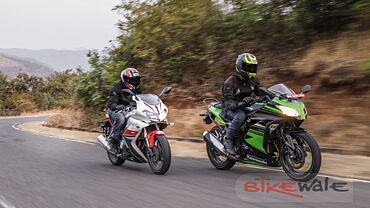
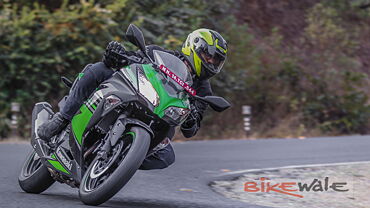
















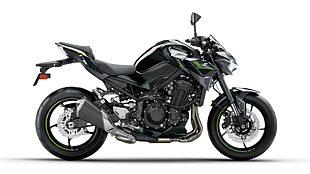
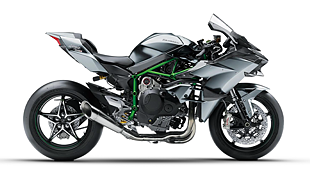






![KTM 390 Adventure X [2025] KTM 390 Adventure X [2025]](https://imgd.aeplcdn.com/272x153/n/cw/ec/190885/390-adventure-x-2025-right-side-view.jpeg?isig=0&q=80)